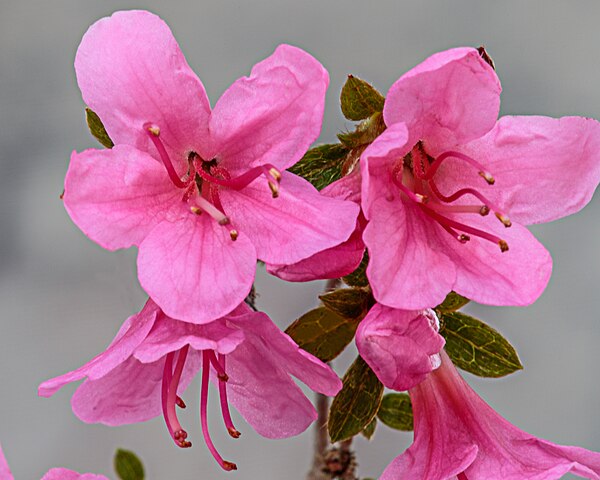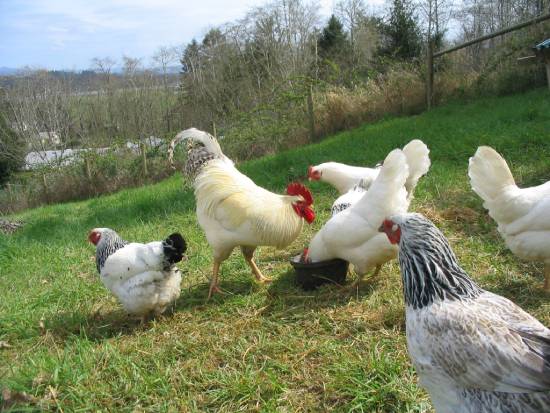Phenology is the study of timing. Examples include dates of germination, emergence, flowering, and fruiting of plants.
One of my graduate advisees served as the inaugural director of the U.S. National Phenology Network. Another of my graduate advisees serves as the second and current director of this non-profit organization. More famously, Henry David Thoreau famously recorded the phenology of plants at Walden Pond. The information he collected served as the basis for a peer-reviewed paper in the renowned BioScience more than 150 years later.
Phenology often provides important information regarding local, regional, and national changes in the environment. As I have reported frequently in this space, the rapidity and magnitude of environmental changes determine the continued survival of ecological entities such as population, communities, and species. In other words, the continued survival of species—including humans—is determined by the rate of environmental change.
An article posted at Phys.Org on 16 December 2024 is titled Scientists can now predict how climate change will alter plant growth cycles. The article opens with this paragraph: “On February 2, 1887, residents of Punxsutawney, Pennsylvania, consulted a large rodent regarding the arrival of spring, marking the first official celebration of Groundhog Day. According to Rob Guralnick, curator of biodiversity informatics at the Florida Museum of Natural History, our ability to predict the timing of seasons hasn’t improved much since then.”
The curator of biodiversity informatics at the Florida Museum of Natural History is then quoted: “We can’t generate good forecasts for whether spring will arrive early or late next year nearly as well as we can make predictions about the weather.”
The article at Phys.Org goes on to point out that weather patterns affect when a season begins and ends. How organisms respond to these patterns is crucial to their survival. “When complex factors like climate change are added to the mix, such predictions become even more difficult to make.”
According to the article at Phys.Org, a new study published in the peer-review, open-access journal Communications Earth & Environment “is set to make seasonal forecasting a little less onerous and a lot more reliable.” Part of the renowned Nature series of peer-reviewed publications, the paper in Communications Earth & Environment was written by four scholars and published on 28 October 2024. The graduate advisee of mine that I mentioned earlier as the second and current director of the National Phenology Network of the United States is one of the four co-authors of this paper. It is titled Phenology response to climatic change depends on spring warming velocity. The Abstract provides an excellent overview of the paper: “Climatic change is dramatically altering phenology but generalities regarding tempo and mode of response remain limited. Here we present a general model framework incorporating spring temperature, velocity of spring warming, and species’ thermal requirements for predicting phenological response to warming. A key prediction of this framework is that species active earlier in the season and located in warmer regions where spring temperature velocity is lowest show strongest sensitivity to climatic change and greatest advancement in response to warming. We test this prediction using plant phenology datasets collected in the 1850s and 2010s. Our results strikingly confirm model predictions, showing that while temperature sensitivity is higher in regions with low temperature velocity, the greatest realized change in phenological onset is northern areas where warming rates have been fastest. Our framework offers enhanced utility for predicting phenological sensitivity and responsiveness in temperate regions and across multiple plant species and potentially other groups.”
The peer-reviewed paper’s Introduction includes this information: “How quickly a location warms up in the spring—and how this factor interacts with the others—makes for a more complex and interesting story. A major determinant of the rate of springtime growing degree days accumulation at a location, and therefore how rapidly various species’ thermal requirements will be reached, is how quickly a location warms up in the spring. We refer to this as the velocity of spring temperature. Locations near moderating influences such as large water bodies are likely to experience relatively warm winter low temperatures and cooler late spring temperatures. Consequently, these locations experience relatively slow spring warming velocities. Conversely, locations lacking moderating influences, as well as low-lying areas where cold air pools, experience colder winter low temperatures and warmer late spring temperatures, resulting in rapid spring temperature velocities.”
The Conclusions section of the peer-reviewed paper provides an excellent overview of the research findings: “We present a model framework reflecting the relationships among spring temperature velocity and species’ thermal requirements to explain phenological onset sensitivity and responsiveness. We then confirmed predictions from this model using a unique dataset spanning the Eastern USA and approximately two decades across a 175-year time period. Empirical observations of onset timing for leaves and flowers were consistent with expectations under our model framework and captured variation in both sensitivity and responsiveness across the study area. Because this model framework is fundamentally grounded in growing degree day accumulations, it has the potential for applicability across additional species and geographic areas. Further, we argue this simple framework can be extended. For example, one might expect to see adapted responses to change, especially over long time periods such as the >150 years between our historical and contemporary datasets. While not addressed here, it may be that strong selection in more northerly areas in Eastern USA where climate change is happening fastest has already sculpted response, especially for earliest onset species (those most sensitive to temperature) and for species with shorter generation times. One such response would be to increase global degree day requirements, thus simultaneously lowering sensitivity and leading to later start to activity, even if climate change is forcing earlier timing.”
The graduate advisee of mine that serves as the current director of the U.S. National Phenology Network provides an important overview of the research in the Phys.Org article: “All 18 species [studied] advanced their leaf growth and flowering phenology. On average, it’s occurring more than three weeks earlier than it did in the past. There are some species that are flowering more than a month earlier.”
That “some species that are flowering more than a month earlier” than only a few generations ago is astonishing. Plants serve as the basis for the continued survival of the animals that eat the plants. Few organisms will be able to keep up with the ongoing rapid rate of environmental change. No evidence indicates human animals are on that list.
Author
"Dr. Guy McPherson is an internationally recognized speaker, award-winning scientist, and the world’s leading authority on abrupt climate change leading to near-term human extinction. He is professor emeritus at the University of Arizona, where he taught and conducted research for twenty years. His published works include 14 books and hundreds of scholarly articles. Dr. McPherson has been featured on TV and radio and in several documentary films. He is a blogger, cultural critic, and co-host of his own radio show “Nature Bats Last.” Dr. McPherson speaks to general audiences across the globe, and to scientists, students, educators, and not-for-profit and business leaders who seek their best available options when confronting Earth’s cataclysmic changes." source
Latest Peer-Reviewed Journal Article:
McPherson, Guy R., Beril Sirmack, and Ricardo Vinuesa. March 2022. Environmental thresholds for mass-extinction events. Results in Engineering (2022), doi: https://doi.org/10.1016/j.rineng.2022.100342.
Editor's Note
It's a beautiful sunny day with skies about as clear as they ever get in coastal Oregon (that's the portion of the Weather Channel's US map which the announcer stands directly in front of, or over which a title is laid). The temperature is - thankfully - 38o F. I read this article with interest (and skimmed the 2 linked papers) due to the effect warming has had on our homestead the past 2 years. Interestingly, I did not find any direct mention of food in these studies.
For the past 2 years, we've had a warm and sunny "spell" during January (evidently what they're terming "Fool's Spring") followed by a complete return to cold, dark, rainy and windy winter weather. As a result, our fruit production has been slim to none. Our fruit trees reveled in January 2023's and January 2024's springlike conditions, as did we all, the trees expressing their joy by setting flowers. When February returned Winter to center stage, cold rain and winds quickly disposed of the flowers. Hence, no harvest either year.
There seems to be disagreement as to whether temperature or daylight length determines flowering and fruiting. Pear tree blooming twice - Ask Extension and https://biology.stackexchange.com/questions/69186/trick-fruit-trees-into-flowering-later-in-the-spring *
January 2025 was mild with a good amount of sun, but no Spring-like week(s). So far in February there have been 2 days of sun with below-freezing nights and cold day temps. Next week predicts a return to Pacific Northwest winter (high 40s / low 50s, wet and dark). Hopefully, our fruit trees will flower late enough to sustain their flowers through fruit and harvest this year.
Twenty years ago we planted a good percentage of the trees on our homestead, each with a purpose: fruit or nuts. Everyone agrees that flowering followed by strong frost means no fruit, no nuts. From the posts which appear in a search regarding flowering, it seems an increasing number of "ordinary" people are paying attention to tree behavior, particularly fruit trees. Perhaps they, like we, are interested in eating.
~ Ed.
* Guy replied he suspects it's both.




